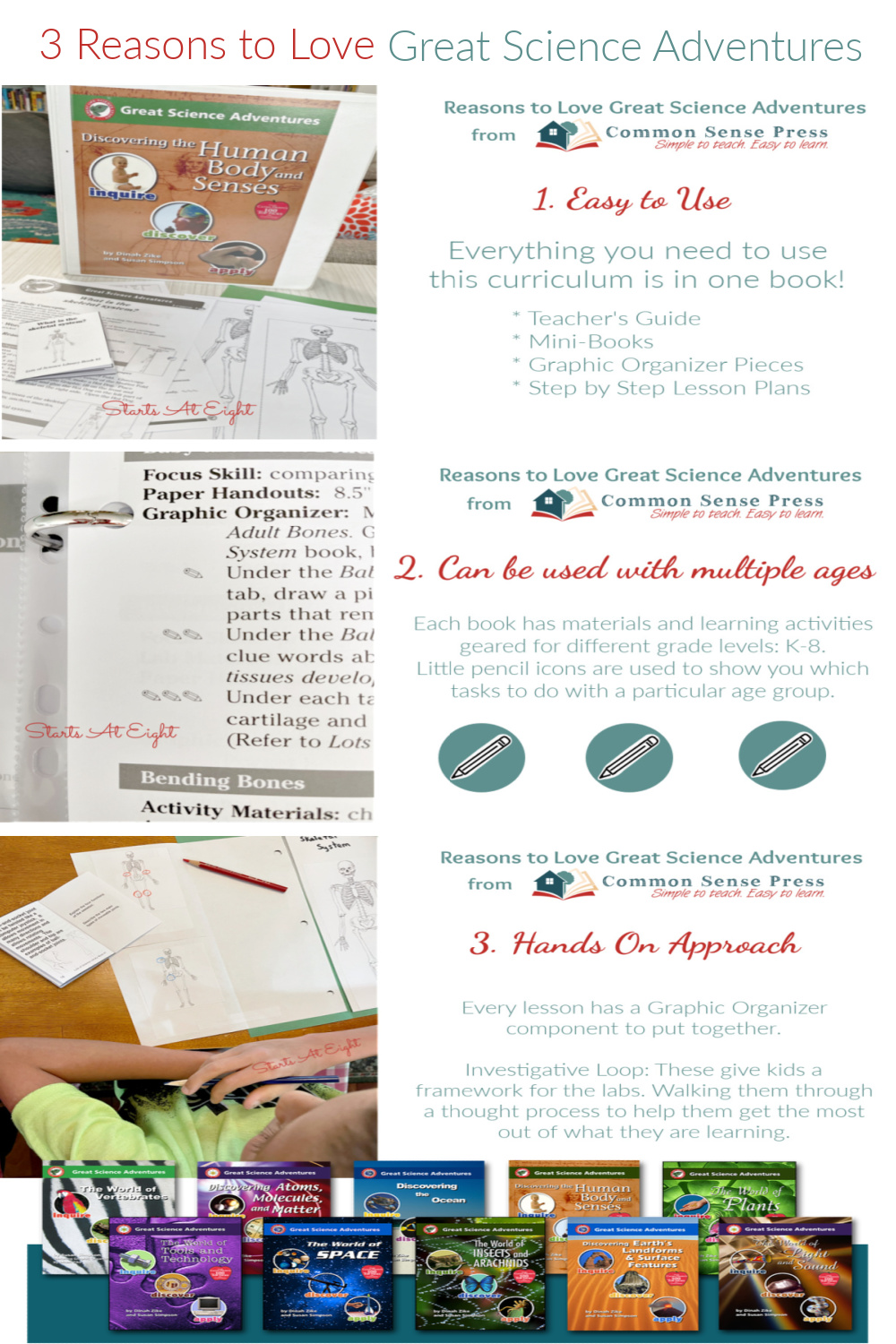Elementary Secular Homeschool Science
Throughout my years of homeschooling we have used many science curriculums, both Christian and Secular. One of the big things I often have people asking me about is, “Where do I find an elementary secular homeschool science curriculum?”
I’m happy to report that while I used to feel all the solid homeschool science curriculum options I came across were Christian, now there are many secular science programs to choose from!
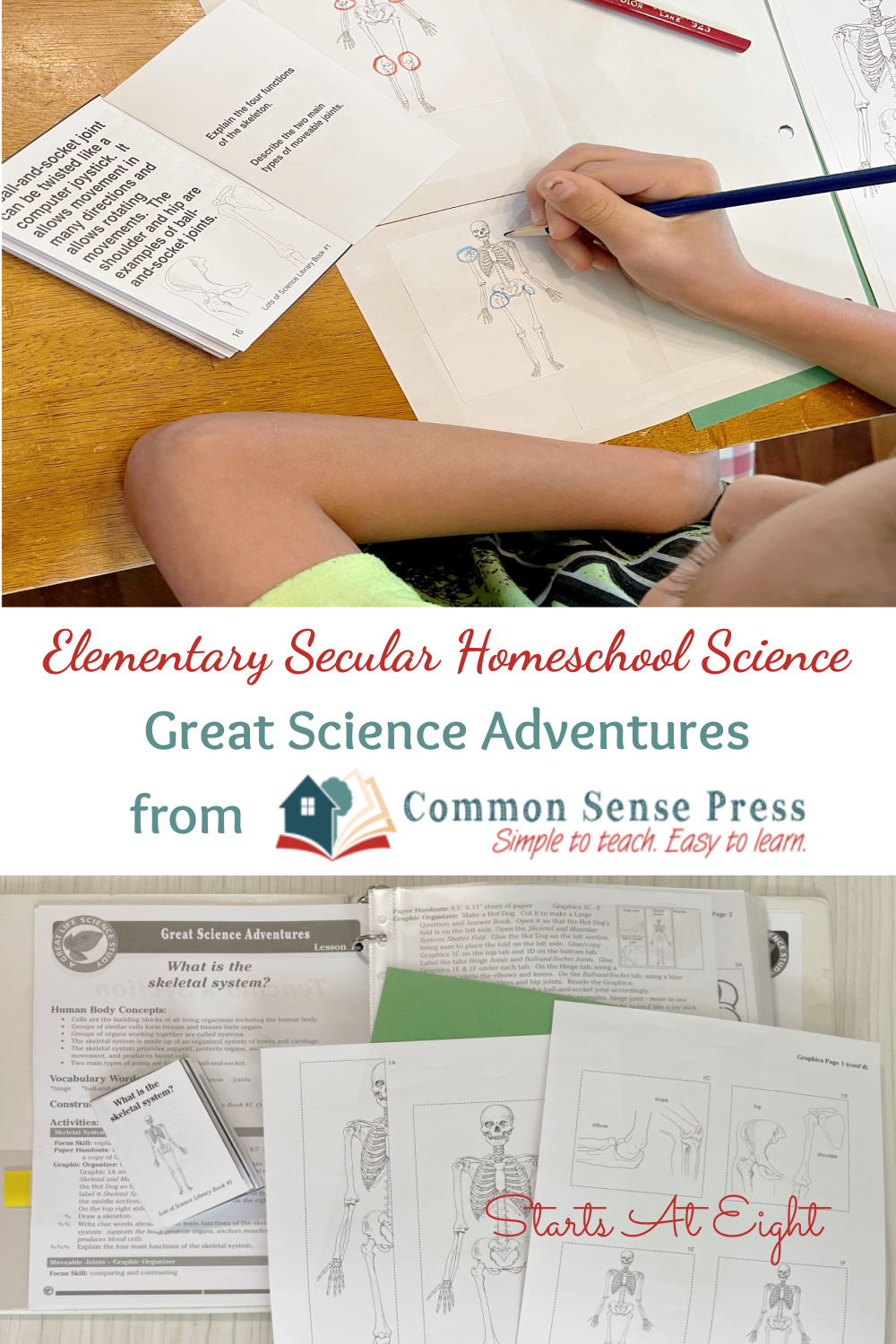
Elementary Secular Homeschool Science
Common Sense Press has a secular homeschool science series called Great Science Adventures. It is a multi-grade level curriculum contained in just one book!
{Disclosure: I received Discovering the Human Body and Senses curriculum for free and was compensated for my time in writing this review. However these are my honest opinions and I was not required to post a positive review. Please see my full Disclosure Policy for more details.}
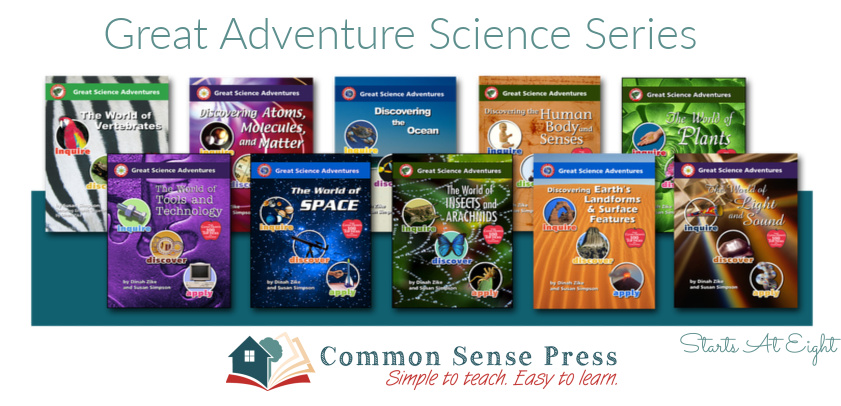
The series is broken down into three science categories:
1. Life Science:
- The World of Plants
- The World of Insects and Arachnids
- Discovering the Human Body and Senses
- The World of Vertebrates
2. Physical Science:
- The World of Tools and Technology
- The World of Light and Sound
- Discovering Atoms, Molecules and Matter
3. Earth Science:
- The World of Space
- Discovering Earth’s Landforms and Surface Features
- Discovering the Ocean
Each book is 24 lessons long and it is recommended that you complete one from each category for a full year of science.
Why is the Great Science Adventures series is considered a secular homeschool science curriculum?
From the Common Sense Press Website: “The Great Science Adventures series was created by two Christian women. Each unit is subject specific and fact based. For example, Earth is described simply as the third planet from the Sun. It is assumed that the teacher has already established origin, age of the earth, etc.”
3 Reasons to Love Great Science Adventures from Common Sense Press
This review is based on our experiences with Discovering the Human Body and Senses.
1. Easy to use
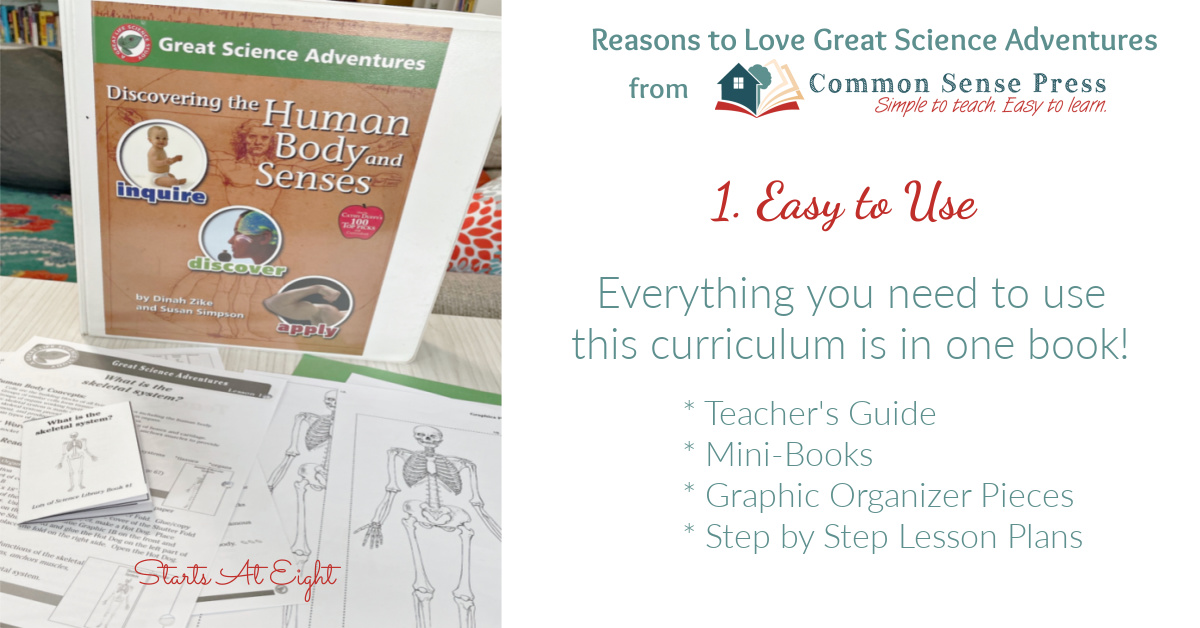
Everything you need for BOTH student and teacher comes in one book!
I love that each lesson clearly includes:
- The concepts to be learned
- Vocabulary Words (There’s a great graphic organizer piece to keep these all organized!)
- The Lots of Science Library Book on the subject for that lesson (A mini book giving kids the most important things to know on the subject.)
- A list of activities for each level
- An Experiences, Investigation, and Research section (for older students to dig deeper.)
All the books and graphic organizer components are at the end of the book.
While I liked all of these things separated and the back, I wished they were either perforated for ease of removal from the book, or just separate loose pages.
To make using this curriculum a totally breeze throughout the year I spent a little time up front to organize it.
Organizing Discovering the Human Body and Senses
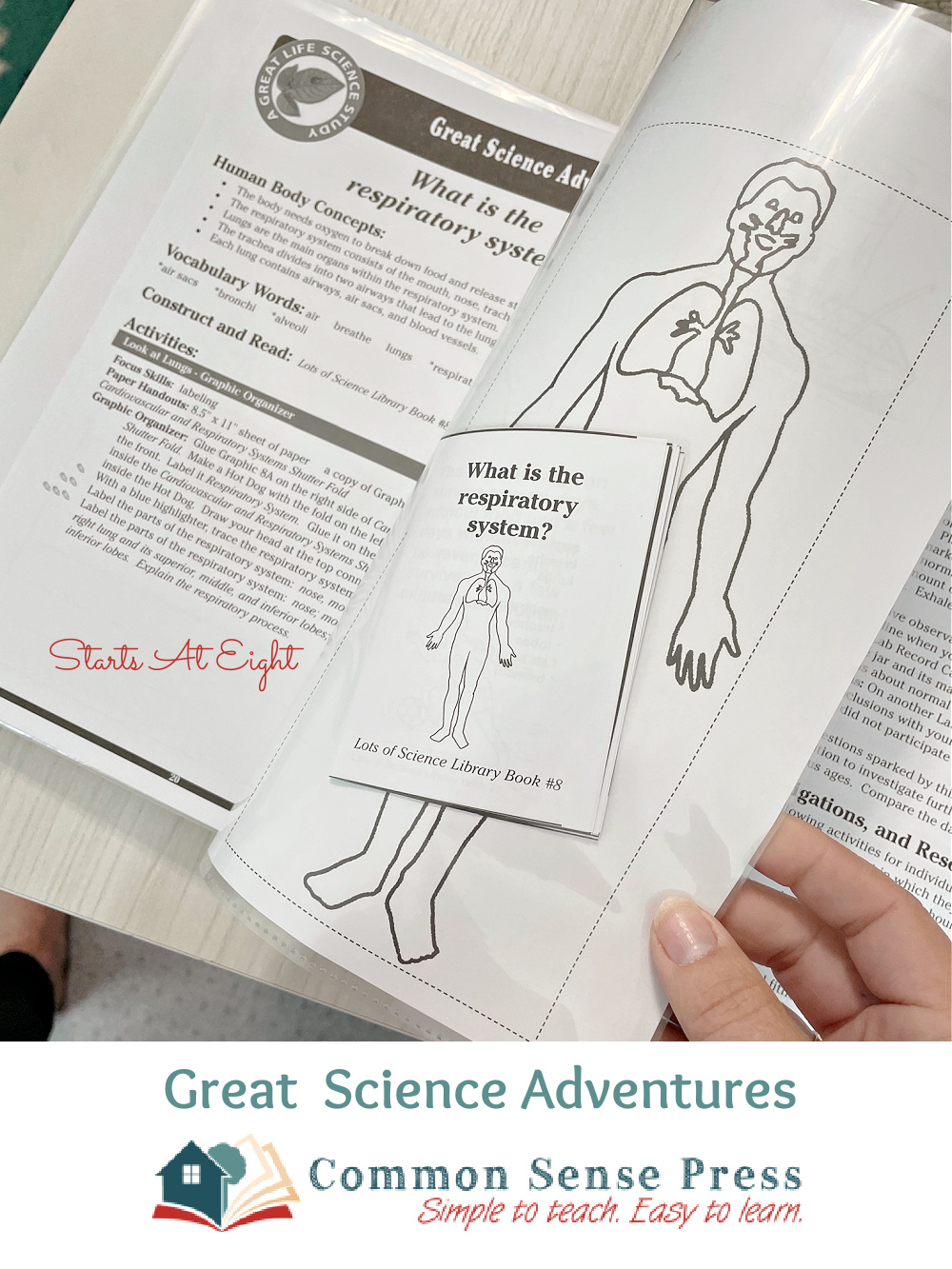
- The first thing I did was cut the binding so I could easily manage the graphic organizer pieces and the Lots of Science Library Books.
- Then I whole punch all the Lesson Plans and put them into a three ring binder.
- Next I added clear plastic sheet protectors in with each lesson.
- Then I cut and assembled all the Lots of Science Library Books and placed them in their corresponding sheet protectors.
- The final thing I did was add all the graphic organizers for each lesson to their prospective sheet protectors.
Doing these things ahead made it so we could just open and go!
2. Can be used with Multiple Ages
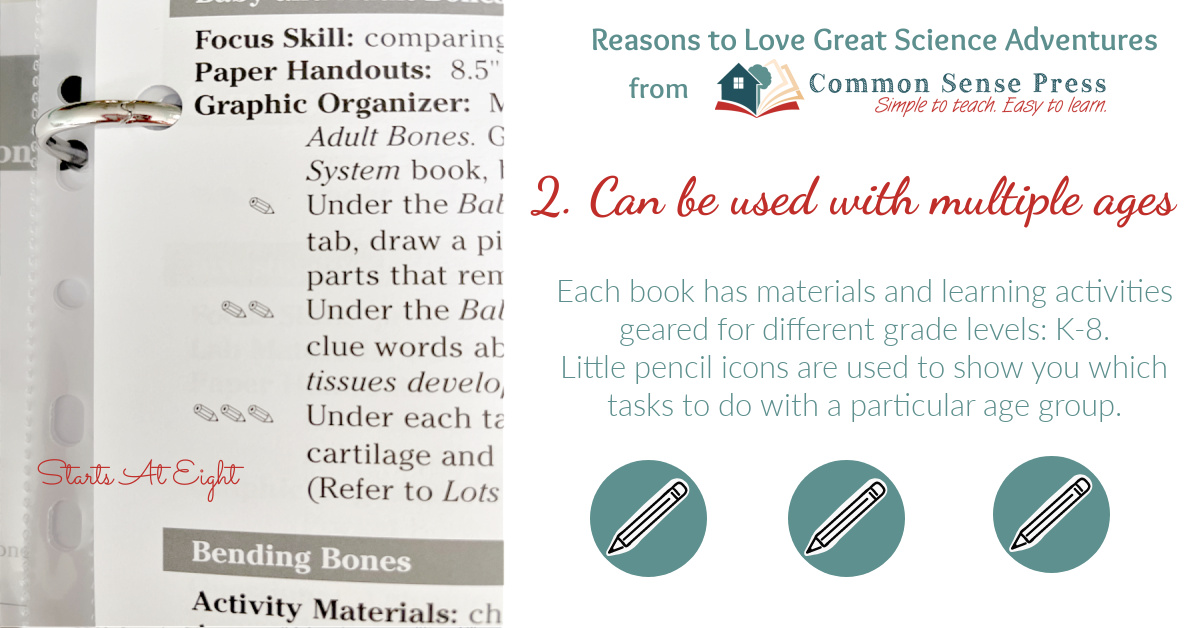
Each book has materials and learning activities geared for different grade levels. Little pencil icons are used to show you which tasks to do with a particular age group.
- One pencil is for K-1: This is the Beginning level, which includes the non-reading or early-reading child.
- Two pencils for grades 2-3: This is the Primary Level. It includes the reading student who is still working to be a fluent reader.
- Three pencils for grades 4-8: This is the Intermediate Level, or fluent reader.
There is also a section at the end of each lesson called… Experiences, Investigations, and Research. This is for use with kids in 7th and 8th grade. In this case they would to the Intermediate Level activities PLUS anything you choose from this section.
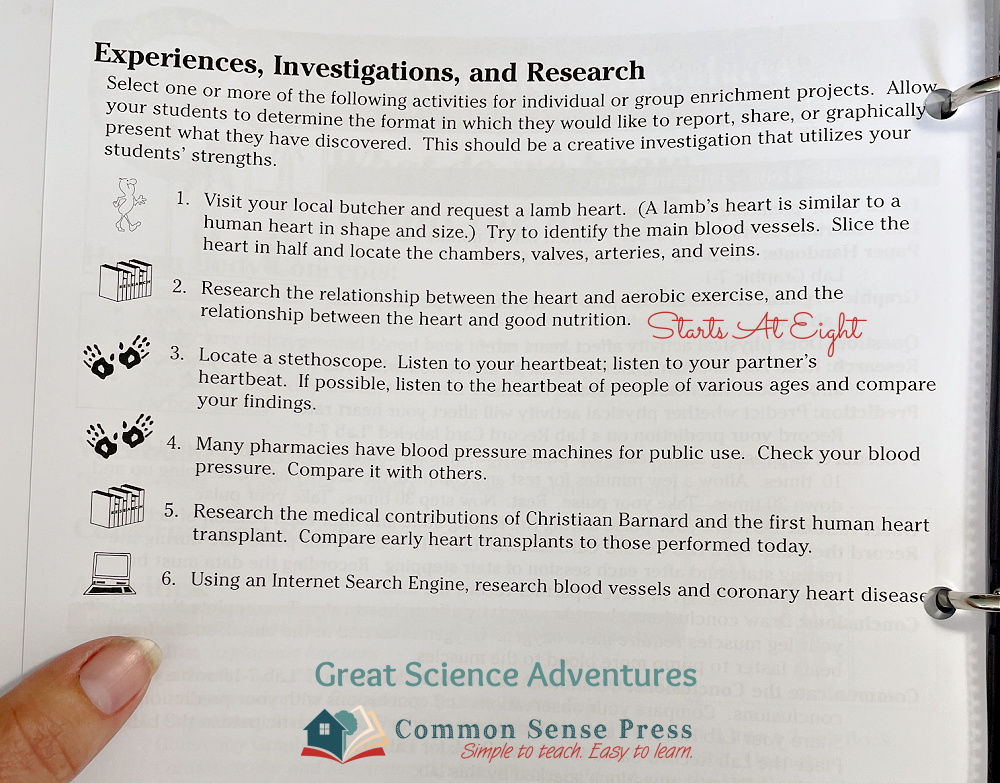
These activities can be reading, research (both Internet and book), and/or hands on tasks. You get to choose from a selection specifically tailored to the lesson you are working on.
3. Hands On Approach
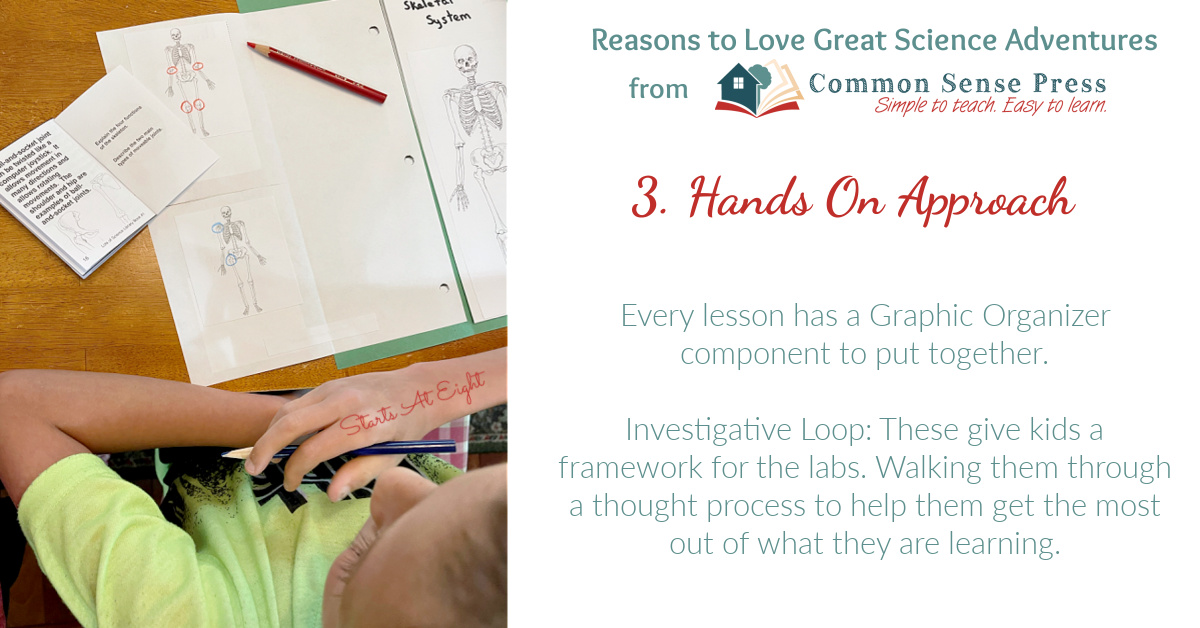
There are two hands-on components to the Great Science Adventures science books:
1. Graphic Organizer
Every lesson has a Graphic Organizer component to put together. This is AMAZING for kids who love to cut and paste, as well as kids (like my youngest) who LOVE having something to show around and read later!
My daughter use to carry these sorts of things around to show off what she learned and still has many on her bookshelf in her room today!
For those of you that aren’t familiar with hot dog folds and accordion books, there is a whole section in the front to walk you through making the different types of graphic organizer pieces.
2. Investigative Loop
These are used throughout the Great Science Adventure books. These give kids a framework for the labs. Walking them through a thought process to help them get the most out of what they are learning.
